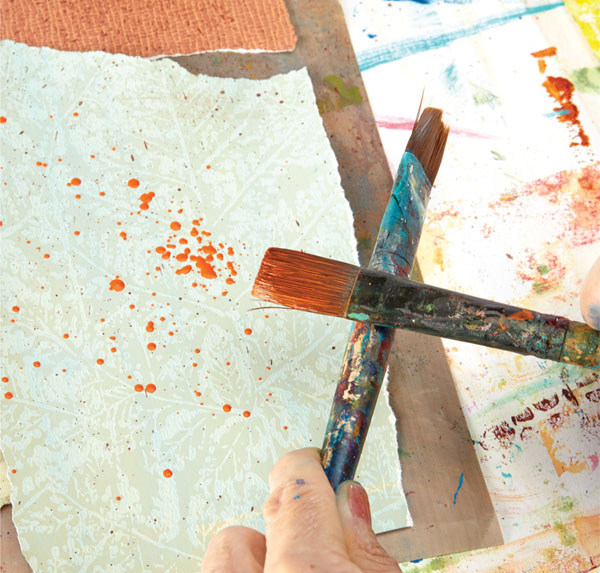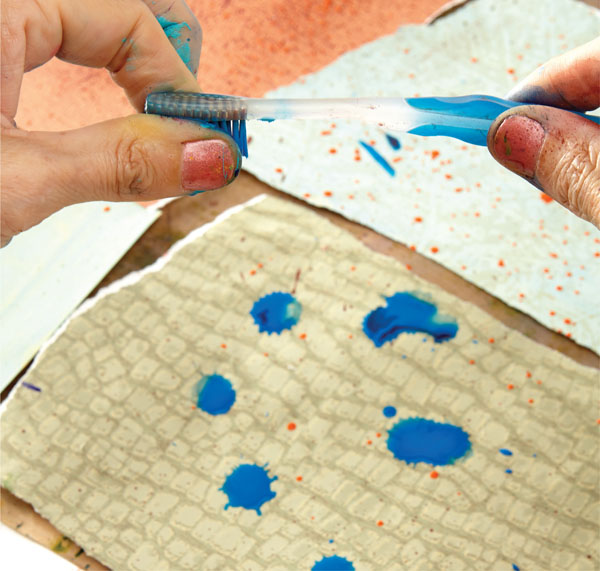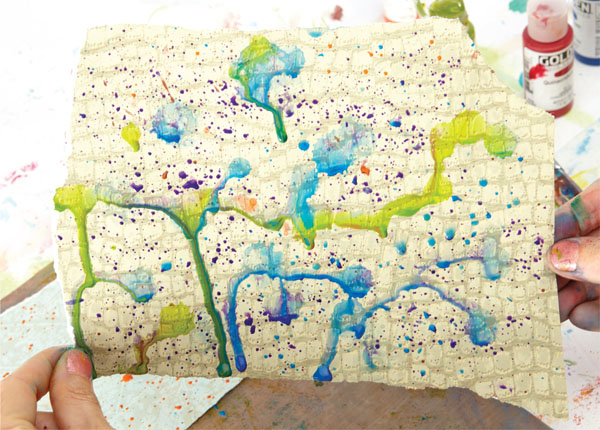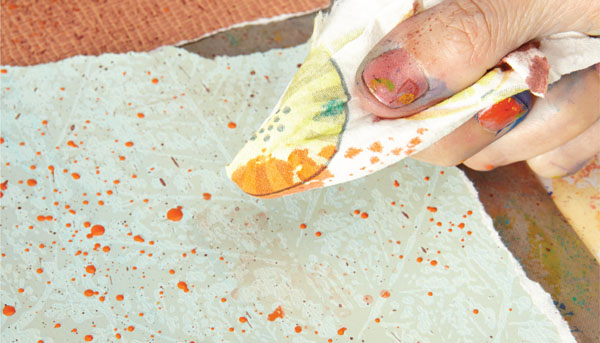
Materials list
acrylic paint
paintbrush
paper towels
spray bottle with water
toothbrush
wallpaper pieces
Splattering remains the most simple and basic of all additive techniques and yet it never grows old. Using a pre-painted sheet of wallpaper, experiment with different types of splatter, then go in with a paper towel to tone back or lighten some of the splatter marks if you desire.

STEP ONE: Load an old toothbrush full with watered-down acrylic paint and flick your thumbnail across it to release a fine splatter texture onto a painted and/or patterned wallpaper sample.

STEP TWO: Load a paintbrush full with watered-down acrylic paint and tap it against a second paintbrush, holding both over your wallpaper, to release a medium splatter texture.

STEP THREE: Load your paintbrush full of watered-down acrylic and squeeze the bristles between your thumb and forefinger to release large droplets of color.

STEP FOUR: Experiment with the amount of water added to the paint and the angle of the splatter. If you lift the paper while the splatter is still wet, you can encourage the larger splats to drip down the sheet.

STEP FIVE: Wrap a paper towel over your pointer finger. Using your finger tip, lightly lift any large splats that bleed together and have become too prominent or any drips you wish to remove or lighten.